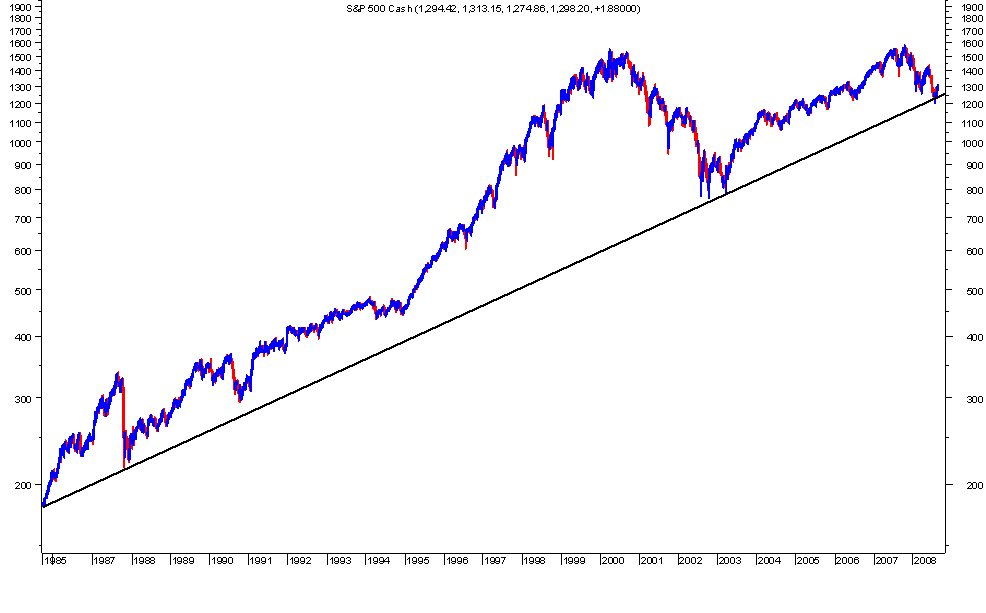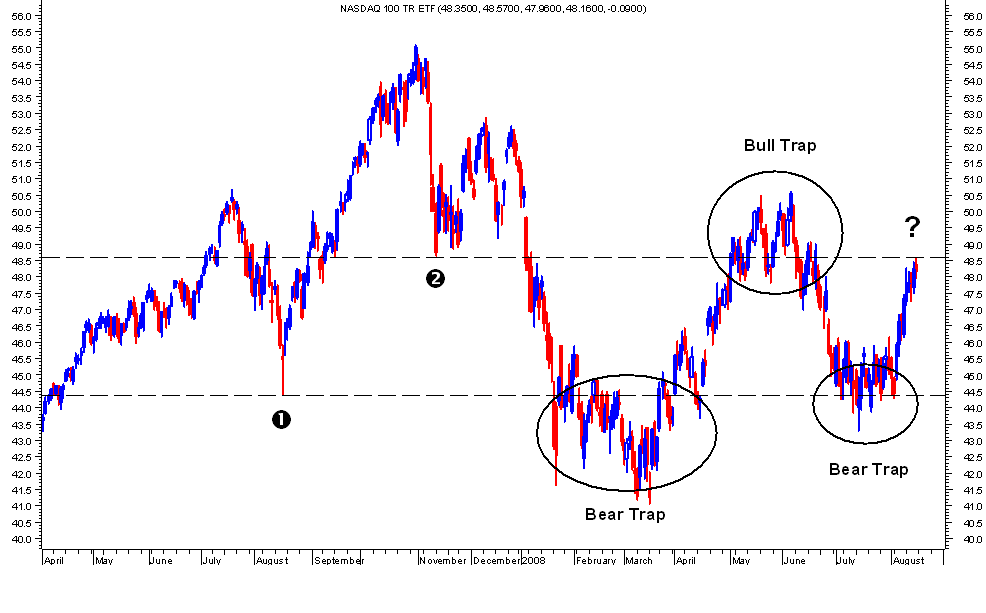This post is a long time in the making. I've wondered for a long, long time why the country can undergo recessions, S & L crises, wars, dot-com busts, housing collapses and anything else you can throw at it and the semi-log $SPX weekly chart has never broken the LLT (long-long term) uptrend line decisively. (chart #1) Sure, it bent...once. In July 2008, but in the 23 years my Metastock allows me to chart it, 99.9% of the price activity has remained above the uptrend line. I think this uptrend line goes back even further than that. Does that seem odd to anyone else but me? We're in the middle of the biggest financial crisis in 20 years and the best we can do is
"bend" the LLT uptrend line? So, what's going on here? I've never believed much in conspiracy theory. I've always believed it originated from insecure, defensive individuals who have an axe to grind. And I really don't think the word
"conspiracy" actually applies here. I'd like to think of the LLT $SPX uptrend line more as
"the minimum advancing slope necessary to maintain the existence of capitalism." That's a mouthful. But I believe it has merit. What exactly is capitalism? Better still, what is the poster child of capitalism? The stock market. Plain and simple. IF the stock market were to fail miserably for 10 or 15 years what would happen to our pension funds, 401k's, society in general? Total economic collapse would be the payoff. It hasn't happened. Every time we have a stock market crash (1987-1990-2000-2007) where do we stop? The uptrend line. So, my 1st point tonight is that betting on a total collapse that takes us through the $SPX LLT uptrend line for more than a short trip is suicidal. It's never happened. The lottery pays as well. Is this because of some PPT or Goldman Sachs etc. intervention? Probably not. Most likely this inflection point is as natural as the seasons and just as powerful. If we can get our heads around that simple fact, the next question is what happens when we have hit or moderately exceeded this
point of no penetration? Recently we exceeded it in the space of one week and bounced back into the uptrend channel. There doesn't really seem to be any good reason here for a rally. Hence a new concept...
"marking time". How does a market trade when it's actually gone as low as it can, realistically, but a rally isn't quite yet on the horizon? Like a sine wave, sucking in shorts at the lows and longs at the highs. (chart #2) is the QQQQ daily. I present to you a "sine wave" effect and the traps within. #1 and #2 represent previous high volume lows that seem to define the channel of the price action to this point. Thx. for reading my babble on a Friday night and everyone have a great weekend! (2 charts)
U.F.O.


Edited by U.F.O., 15 August 2008 - 10:53 PM.
